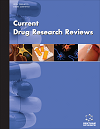
Full text loading...
Cancer therapies have advanced significantly, yet traditional treatments still confront obstacles, such as systemic toxicity and drug resistance. Nanotechnology plays a pivotal role in addressing these issues, particularly through the development of polymer nanocomposites (PNCs). PNCs are hybrid materials composed of a polymer matrix embedded with nanoscale fillers. These composites can be classified based on the type of matrix (ceramic, metal, or polymer) and their structural properties (exfoliated or intercalated forms). Synthesis methods, such as solvent casting and in situ polymerization, ensure the uniform dispersion of nanoparticles within the polymer matrix. PNC-based drug delivery systems are categorized into two types: passive targeting, which leverages the enhanced permeability and retention (EPR) effect, and active targeting, which relies on ligand-receptor interactions. In the pharmaceutical industry, recent developments in nanocomposite-based systems have demonstrated great promise, especially in terms of improving medication solubility, stability, and bioavailability while reducing adverse effects. These methods use nanoparticles embedded in a matrix to increase drug delivery, addressing issues, such as poor solubility and limited bioavailability associated with conventional therapies. Before these novel medicines are widely used, clinical studies are essential for assessing their safety and effectiveness and making sure they adhere to legal requirements. Furthermore, the growth of patents pertaining to nanocomposites indicates continued study and advancement in this field, emphasizing nanocomposites’ potential uses in a range of medical conditions. Nanocomposites are anticipated to transform drug delivery methods and make a substantial contribution to current medicine as research advances.

Article metrics loading...

Full text loading...
References


Data & Media loading...

